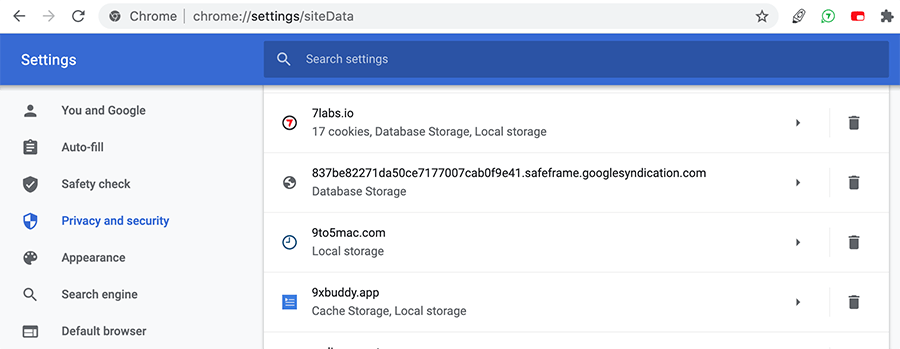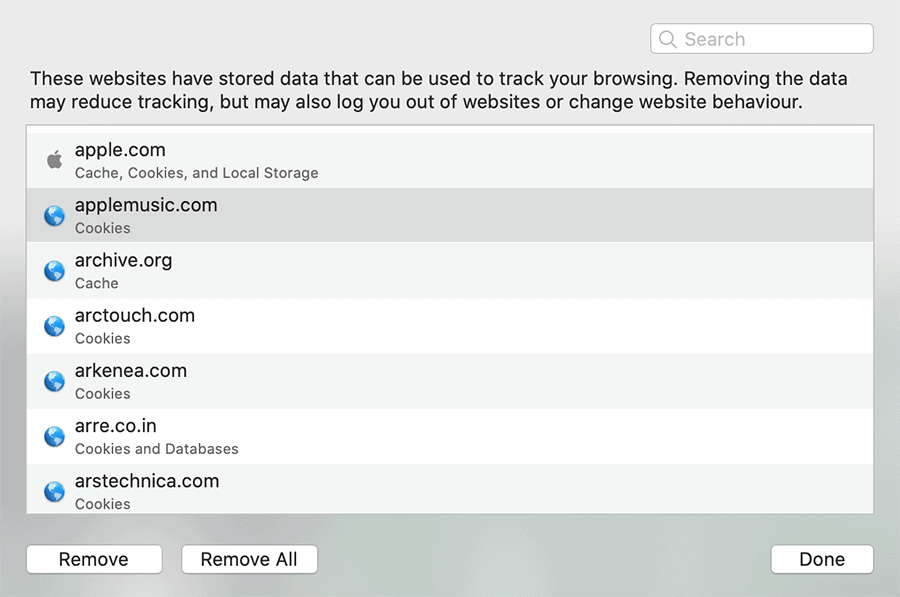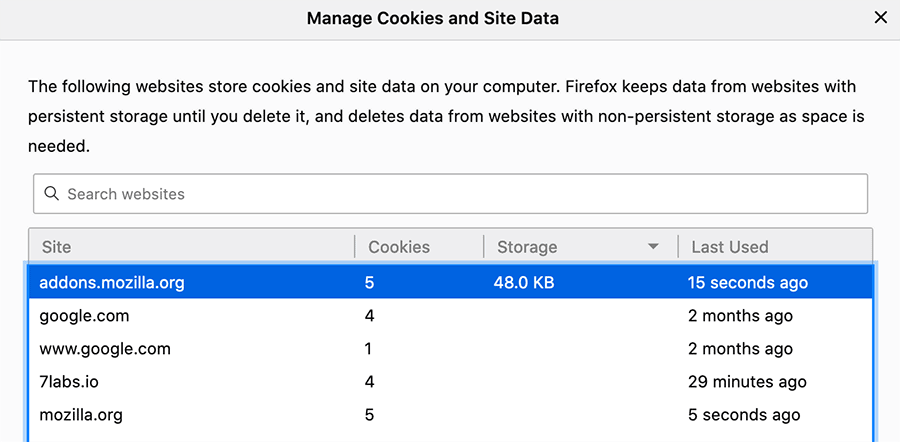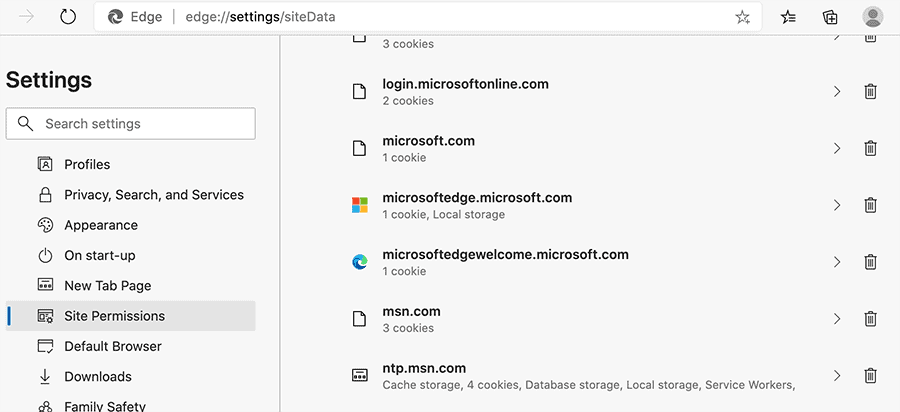Websites you open on your favorite web browser often store data locally on your computer. These data help the websites to load faster, or keep track of your preferences to give you a personalized experience. Over time, though, this data gets accumulated, and sometimes may result in conflicts, causing sites to load incorrectly or providing a bad experience. Often, these conflicts and page rendering issues can be resolved by clearing the website data.
Websites you visit primarily store the following two types of data locally on your computer:
Cookies and other site data: These include files that are used by websites to function normally, track your website activity (for gathering site analytics), serve personalized ads & experiences, and other site-specific configurations. Deleting cookies could cause you to lose your browsing preferences and terminate active logged-in sessions.
Cached images and files: These are web resources saved locally on your computer so that they need not be re-downloaded from the server each time you load a particular website. Static files, which aren’t updated frequently, are the usual candidates for cached resources. Caching helps websites to load faster, and save your Internet bandwidth.
Now, it’s relatively easy to find the setting for clearing all your cookies and cache on a single click. But doing so deletes data across all sites, which may not be convenient always. Deleting all data may cause some websites to load slower than earlier, and often consume more bandwidth. Moreover, this will terminate all active sessions on any website you’ve previously logged into, requiring you to individually re-login to each website again.
Instead of clearing all data, one way to solve page rendering issues without taking a significant hit on your web browsing experience is to clear cookies and cache for the particular website where you’re facing the issue. Though all popular web browsers provide the option to clear all cookies and cache data with a simple click of a button, they also have the option to clear site-specific data, which many users may be unaware of.
In this post, we’ll explore how to clear site-specific data in Chrome, Safari, Firefox, and Edge.
Clear cookies, cache and site data for a specific website in Chrome

Follow the steps below to delete site-specific cookies and cache in Google Chrome:
- Launch Google Chrome and enter the following in the address bar: “
chrome://settings/siteData” and skip to step #5. - Alternatively, click on the Menu (three dots) from the top right corner and click on Settings.
- Go to Privacy and security on the left pane and click “Cookies and other site data”.
- Scroll down and click on “See all cookies and site data”.
- Type the name of the website for which you want to delete data (eg. Google.com) in the “Search cookies” text box in the top right corner. The list is filtered showing only data from the searched domain.
- Choose the data you want to delete and click on the bin icon next to the appropriate entries. You can even remove individual cookies and site data by selecting a particular site entry, and then clicking the ‘x’ icon adjacent to individual items. If your search filters multiple domains, you can remove all the filtered cookies and site data by clicking on “Remove All Shown”. Chrome will ask for confirmation; click on Clear all to delete all the filtered data.
The cookies and site data for the specific website is now removed.
Clear cookies, cache and site data for a specific website in Safari

On Safari, the steps to clear specific site data are almost the same as clearing all cache and cookie data. Follow the steps below to clean up specific site data in Safari.
- Launch Safari and go to Safari Menu >> Preferences from the top-left corner.
- Go to the Privacy tab and click on “Manage Website Data…”.
- Type the name of the website for which you want to delete data (eg. Google.com) in the “Search” text box in the top right corner. The list is filtered showing only data from the searched domain.
- Select the data you want to delete and click on Remove at the bottom-right. Do this for all the data you want to remove.
Finally, click on Done to close the popup.
Clear cookies, cache and site data for a specific website in Firefox

To remove specific website data in Firefox, follow the below procedure.
- Launch Firefox and enter the following in the address bar: “
about:preferences#privacy” and skip to step #4. - Alternatively, open the Menu from the top-right corner.
- Go to Preferences >> Privacy & Security on the left pane.
- Scroll down to Cookies and Site Data and click on the “Manage Data…” button.
- Type the name of the website for which you want to delete data (eg. Google.com) in the “Search websites” text field on top.
- From the filtered list, select the data you want to delete and click the Remove Selected button. Alternatively, you can also delete all website data by clicking the Remove All button.
Finally, click on Save Changes to save and close the popup. The selected website data is now deleted.
Clear cookies, cache and site data for a specific website in Edge (Chromium)

Note: The below steps are only applicable for the modern Chromium version of the Edge browser. The legacy version of Microsoft Edge does not support site-specific cookies and data removal.
If you’re using the Chromium version of Microsoft Edge, follow the steps below to clear all cookies, cache, and site data for specific websites.
- Launch Microsoft Edge (Chromium) and enter the following in the address bar: “
edge://settings/siteData” and skip to step #6. - Alternatively, click on the Menu (three dots) from the top right corner and click on Settings.
- Click on Site Permissions from the left nav panel.
- Under Site Permissions, click on Cookies and site data.
- Click on “See all cookies and site data”.
- Type the name of the website for which you want to delete data (eg. Google.com) in the “Search cookies” text box in the top right corner. The list is filtered showing only data from the searched domain.
- Choose the data you want to delete and click on the bin icon next to the appropriate entries. You can even remove individual cookies and site data by selecting a particular site entry, and then clicking the bin icon adjacent to individual items. If your search filters multiple domains, you can remove all the filtered cookie and site data by clicking on “Remove all shown”. Edge will ask for confirmation; click on Clear to delete all the filtered data.
The cookies and site data for the specific website is now removed.
Clear cache, cookies and site data for specific websites in Internet Explorer 11
If you’re still using the legacy Internet Explorer, this is how you need to delete site-specific cache, cookies, and other data from your browser.
- Launch Internet Explorer and navigate to the website for which you want to delete cookies and cache.
- Press F12 to launch Developer Tools and go to the Network tab.
- To clear the cache for the current website, click on the “Clear browser cache” button or press Ctrl + R.
This will remove the cookies and data for that specific website.
By deleting site-specific data, you can resolve rendering issues with particular websites without impacting your experience on other websites. On rare occasions, these issues might persist even after clearing the website data. In such situations, you might need to reset your browser and start a new session from scratch. But that solution should be kept aside as a last resort.